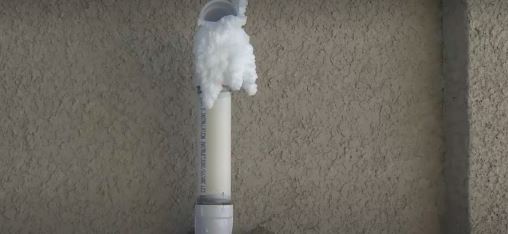
In Extreme Cold Check Your Vents and Pipes
As we continue to grapple with an extreme cold snap, residents are being urged to take extra precautions in regards to household vents and pipes. Plummeting temperatures always bring unique challenges, one of which includes the risk of vent blockages, leading to serious health hazards.
Experts warn that blockages in the end of vent pipes can severely disrupt proper draining and air circulation within homes. A house may have one or many sewer vent pipes. All are important and necessary for a properly functioning house sewer system.
Sewer pipes have to be vented to allow air into the pipe for proper flow. The sewer pipe and vent pipes are connected so wastewater flows downward and sewer gases rise. During extended periods of very cold weather, sewer gas containing water vapor will condense, then freeze to form a frost layer in the exposed uninsulated end of the vent pipe. This frost layer can seal the pipe partially or fully, forming a plug. Hard, drifted snow also can plug the end of the vent pipes.
If the end of the vent pipe is plugged, proper draining will be hampered and air will be pulled into the piping, which will drain the traps of water fixtures. The consequence of this is the potential influx of sewer gas into homes. Composed mainly of methane and carbon monoxide, sewer gas typically has a noticeable “sewer” smell, although it’s important to note that some of its components can be odorless yet harmful.
The first indication of trouble may be the toilet gurgling or not flushing properly as water is pulled from the traps to replace existing water and air flow. Sewer gas may cause people to become sick with symptoms such as headache, nausea and/or dizziness.
The cold weather also requires monitoring of furnace exhaust pipes for ice accumulation. Low temperatures, coupled with wind chill, could cause these pipes to become clogged with ice, which poses a significant risk of carbon monoxide poisoning. Residents are advised to regularly check their carbon monoxide detectors to ensure they are functioning correctly. It is recommended to have at least two detectors in a home, one on each floor.
As the cold persists, residents are also reminded of the dangers of warming up vehicles. It’s cold and not fun to get into a cold vehicle, but remember–never run your vehicle in a garage or any enclosed area. Vehicles should be fully backed out immediately after starting, as engines can produce a large amount of carbon monoxide quickly. Additionally, checking that the vehicle’s exhaust pipe is free from snow and ice is crucial for safe operation.








































